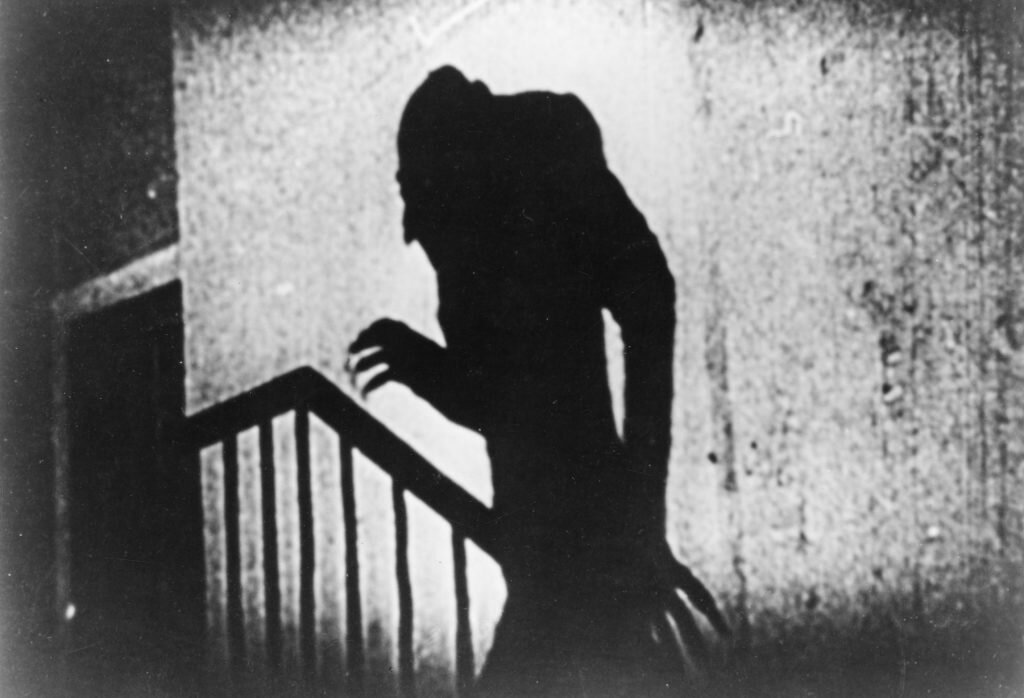Horror and Fear in Murnau’s Nosferatu
The horror film, Noel Carroll asserts, is—unlike the Western, for example—classed as such because of its affect rather than any particular setting: “the cross-art, cross-media genre of horror takes its title from the emotion it characteristically or rather ideally promotes; this emotion constitutes the identifying mark of horror” (14). Further, Carroll argues that different from myth, which also features monsters, horror is demarcated in no small part by the attitude of the characters in the narrative to the monster, which in the case of horror “breach the ontological propriety” that constructs the characters’ world (16). As viewers, he suggests, “our responses are meant, ideally, to parallel those of the characters” (18). From this he constructs a way to approach emotional analysis in the horror film, which differs in bodily response from the emotions that other genres evoke. He is careful not to offer a reductive, universalizing reading of how emotional response functions, but by and large, Carroll argues, cognitive elements in film evoke emotional responses that then result in “physical perturbations” that stem from our factual and evaluative cognitive responses to what’s depicted onscreen (25-6). In essence, our embodied fear response is an empathic response to the characters’ own fears.
What the characters fear, of course, is often influenced by sociological anxieties that are made metaphorical or otherwise coded into horror narratives, which is a phenomenon that Franco Moretti explores in “The Dialectic of Fear.” He argues that “the monster… serves to displace the antagonisms and horrors evidenced within society” and that “whoever dares to fight the monster automatically becomes the representative of the species” (68). This division is visible in Murnau’s 1922 Nosferatu, which pits the visibly-Othered Count Orlock against young Hutter and his fiancé Nina. The film features what Robin Wood terms the “descent myth” in which “characters existing in a state of innocence” are, through “a process of (often literal) descent” then “led to discover a terrible underlying reality of whose existence they had scarcely dreamed” (120). In the process of that descent, Hutter and, to a larger degree, Nina, must then, as Moretti suggests, take on the Monster—and in doing so come to represent “civilized” society.
Hutter isn’t sure what to do with the erotic experience Orlock offers.
This is underscored by the desire that both Nina and Hutter—clearly stricken by Orlock sucking blood from his finger—seem to have toward Orlock; such desires, for either the foreign/ ethnic Other or for someone of the same sex, are both anxieties that society (especially at the time) was deeply invested in repressing, which thus narratively demands the annihilation of Orlock, carried out when Nina tricks him into exposure to sunlight. Nina’s inappropriate desire is punished by her own death as well, which suggests that femininity—particularly unyoked feminine desire—is also monstrous.
Orlock drinks from Nina.
Works Cited
Carroll, Noel. “The Nature of Horror.” The Philosophy of Horror, or, Paradoxes of the Heart, Routledge, 1990, pp. 12-35.
Moretti, Franco. “The Dialectic of Fear.” New Left Review, vol. 136, 1982, pp. 67-85.
Murnau, F.W. Nosferatu. 1922. https://www.youtube.com/watch?v=FC6jFoYm3xs.
Wood, Robin. “The Dark Mirror: Murnau’s Nosferatu.” Robin Wood on the Horror Film: Collected Essays and Reviews, Wayne State UP, 2018, pp. 119-32.


